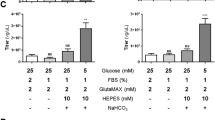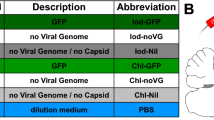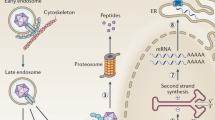Abstract
Adeno-associated virus (AAV) is currently one of the most promising systems for human gene therapy. Numerous preclinical studies have documented the excellent safety profile of these vectors along with their impressive performances in their favored target, consisting of highly differentiated postmitotic tissues such as muscle, central nervous system and liver. Clinical trials have been conducted confirming these data, but also emphasizing the requirement of further high-tech developments of the production and purification procedures that would allow both scaling-up and improvement of vector batch quality, necessary to human application. The scope of this review will be the state of the art in the various production methods of recombinant AAV (rAAV), delimiting their respective perimeter of application and also their main advantages and drawbacks, and thereby shedding light on the main challenges to take in the near future to bring AAV vectors more widely into the clinics.
This is a preview of subscription content, access via your institution
Access options
Subscribe to this journal
Receive 12 print issues and online access
$259.00 per year
only $21.58 per issue
Buy this article
- Purchase on Springer Link
- Instant access to full article PDF
Prices may be subject to local taxes which are calculated during checkout





Similar content being viewed by others
References
Snyder RO . Adeno-associated virus-mediated gene delivery. J Gene Med 1999; 1: 166–175.
Berns KI . Parvoviridae: the virus and their replication. In: Fields BN, Knipe DM, Howley PM (eds) Fields in Virology. Lippincott, Raven: Philadelphia, 1996, pp 2173–2197.
Rutledge EA, Halbert CL, Russell DW . Infectious clones and vectors derived from adeno-associated virus (AAV) serotypes other than AAV type 2. J Virol 1998; 72: 309–319.
Gao GP et al. Novel adeno-associated viruses from rhesus monkeys as vectors for human gene therapy. Proc Natl Acad Sci USA 2002; 99: 11854–11859.
Gao G et al. Clades of Adeno-associated viruses are widely disseminated in human tissues. J Virol 2004; 78: 6381–6388.
Mori S, Wang L, Takeuchi T, Kanda T . Two novel adeno-associated viruses from cynomolgus monkey: pseudotyping characterization of capsid protein. Virology 2004; 330: 375–383.
Qiu J, Pintel DJ . Alternative polyadenylation of adeno-associated virus type 5 RNA within an internal intron is governed by the distance between the promoter and the intron and is inhibited by U1 small nuclear RNP binding to the intervening donor. J Biol Chem 2004; 279: 14889–14898.
Erles K, Sebokova P, Schlehofer JR . Update on the prevalence of serum antibodies (IgG and IgM) to adeno-associated virus (AAV). J Med Virol 1999; 59: 406–411.
Tobiasch E et al. Discrimination between different types of human adeno-associated viruses in clinical samples by PCR. J Virol Methods 1998; 71: 17–25.
Kotin RM et al. Site-specific integration by adeno-associated virus. Proc Natl Acad Sci USA 1990; 87: 2211–2215.
Samulski RJ et al. Targeted integration of adeno-associated virus (AAV) into human chromosome 19. EMBO J 1991; 10: 3941–3950.
Samulski RJ, Berns KI, Tan M, Muzyczka N . Cloning of adeno-associated virus into pBR322: rescue of intact virus from the recombinant plasmid in human cells. Proc Natl Acad Sci USA 1982; 79: 2077–2081.
Samulski RJ, Chang LS, Shenk T . A recombinant plasmid from which an infectious adeno-associated virus genome can be excised in vitro and its use to study viral replication. J Virol 1987; 61: 3096–3101.
Tratschin JD, Miller IL, Smith MG, Carter BJ . Adeno-associated virus vector for high-frequency integration, expression, and rescue of genes in mammalian cells. Mol Cell Biol 1985; 5: 3251–3260.
Grimm D, Kay MA . From virus evolution to vector revolution: use of naturally occurring serotypes of adeno-associated virus (AAV) as novel vectors for human gene therapy. Curr Gene Ther 2003; 3: 281–304.
Tratschin JD, Miller IL, Carter BJ . Genetic analysis of adeno-associated virus: properties of deletion mutants constructed in vitro and evidence for an adeno-associated virus replication function. J Virol 1984; 51: 611–619.
Srivastava A, Lusby EW, Berns KI . Nucleotide sequence and organization of the adeno-associated virus 2 genome. J Virol 1983; 45: 555–564.
Weitzman MD, Kyostio SR, Kotin RM, Owens RA . Adeno-associated virus (AAV) Rep proteins mediate complex formation between AAV DNA and its integration site in human DNA. Proc Natl Acad Sci USA 1994; 91: 5808–5812.
Horer M et al. Mutational analysis of adeno-associated virus Rep protein-mediated inhibition of heterologous and homologous promoters. J Virol 1995; 69: 5485–5496.
Pereira DJ, McCarty DM, Muzyczka N . The adeno-associated virus (AAV) Rep protein acts as both a repressor and an activator to regulate AAV transcription during a productive infection. J Virol 1997; 71: 1079–1088.
King JA, Dubielzig R, Grimm D, Kleinschmidt JA . DNA helicase-mediated packaging of adeno-associated virus type 2 genomes into preformed capsids. EMBO J 2001; 20: 3282–3291.
Schlehofer JR, Ehrbar M, zur Hausen H . Vaccinia virus, herpes simplex virus, and carcinogens induce DNA amplification in a human cell line and support replication of a helpervirus dependent parvovirus. Virology 1986; 152: 110–117.
Weindler FW, Heilbronn R . A subset of herpes simplex virus replication genes provides helper functions for productive adeno-associated virus replication. J Virol 1991; 65: 2476–2483.
McPherson RA, Rosenthal LJ, Rose JA . Human cytomegalovirus completely helps adeno-associated virus replication. Virology 1985; 147: 217–222.
Wistuba A et al. Subcellular compartmentalization of adeno-associated virus type 2 assembly. J Virol 1997; 71: 1341–1352.
Chiorini JA et al. Cloning of adeno-associated virus type 4 (AAV4) and generation of recombinant AAV4 particles. J Virol 1997; 71: 6823–6833.
Chiorini JA, Kim F, Yang L, Kotin RM . Cloning and characterization of adeno-associated virus type 5. J Virol 1999; 73: 1309–1319.
Xiao W et al. Gene therapy vectors based on adeno-associated virus type 1. J Virol 1999; 73: 3994–4003.
Snyder RO, Xiao X, Samulski RJ . Production of recombinant adeno-associated viral vectors. In: Dracopoli N, Haines J, Krof B, Moir D, Morton C, Seidman C, Seidman J, Smith D (eds). Current Protocols in Human Genetics. John Wiley and Sons Publisher: New York, 1996, pp 11–24.
Zolotukhin S et al. Recombinant adeno-associated virus purification using novel methods improves infectious titer and yield. Gene Therapy 1999; 6: 973–985.
Zolotukhin S et al. Production and purification of serotype 1, 2, and 5 recombinant adeno-associated viral vectors. Methods 2002; 28: 158–167.
Brument N et al. A versatile and scalable two-step ion-exchange chromatography process for the purification of recombinant adeno-associated virus serotypes-2 and -5. Mol Ther 2002; 6: 678–686.
Kaludov N, Handelman B, Chiorini JA . Scalable purification of adeno-associated virus type 2, 4, or 5 using ion-exchange chromatography. Hum Gene Ther 2002; 13: 1235–1243.
Samulski RJ, Chang LS, Shenk T . Helper-free stocks of recombinant adeno-associated viruses: normal integration does not require viral gene expression. J Virol 1989; 63: 3822–3828.
Monahan PE et al. Direct intramuscular injection with recombinant AAV vectors results in sustained expression in a dog model of hemophilia. Gene Therapy 1998; 5: 40–49.
Snyder RO et al. Persistent and therapeutic concentrations of human factor IX in mice after hepatic gene transfer of recombinant AAV vectors. Nat Genet 1997; 16: 270–276.
Salvetti A et al. Factors influencing recombinant adeno-associated virus production. Hum Gene Ther 1998; 9: 695–706.
Xiao X, Li J, Samulski RJ . Production of high-titer recombinant adeno-associated virus vectors in the absence of helper adenovirus. J Virol 1998; 72: 2224–2232.
Matsushita T et al. Adeno-associated virus vectors can be efficiently produced without helper virus. Gene Therapy 1998; 5: 938–945.
Grimm D et al. Titration of AAV-2 particles via a novel capsid ELISA: packaging of genomes can limit production of recombinant AAV-2. Gene Therapy 1999; 6: 1322–1330.
Collaco RF, Cao X, Trempe JP . A helper virus-free packaging system for recombinant adeno-associated virus vectors. Gene 1999; 238: 397–405.
Li J, Samulski RJ, Xiao X . Role for highly regulated rep gene expression in adeno-associated virus vector production. J Virol 1997; 71: 5236–5243.
Vincent KA, Piraino ST, Wadsworth SC . Analysis of recombinant adeno-associated virus packaging and requirements for rep and cap gene products. J Virol 1997; 71: 1897–1905.
Grimm D, Kern A, Rittner K, Kleinschmidt JA . Novel tools for production and purification of recombinant adenoassociated virus vectors. Hum Gene Ther 1998; 9: 2745–2760.
Allen JM, Debelak DJ, Reynolds TC, Miller AD . Identification and elimination of replication-competent adeno-associated virus (AAV) that can arise by nonhomologous recombination during AAV vector production. J Virol 1997; 71: 6816–6822.
Schlaeger EJ et al. Transient transfection in mammalian cells. A basic study for an efficient and cost-effective scale up process. In: Merten OW, Perrin P, Griffiths B (eds). New Developments and New Applications in Animal Cell Technology. Kluwer Academic Publishers: Dordrecht, 1998, pp 105–112.
Girard P et al. 100-liter transient transfection. Cytotechnology 2002; 38: 15–21.
Clark KR, Voulgaropoulou F, Fraley DM, Johnson PR . Cell lines for the production of recombinant adeno-associated virus. Hum Gene Ther 1995; 6: 1329–1341.
Blouin V et al. Improving rAAV production and purification: towards the definition of a scaleable process. J Gene Med 2004; 6 (Suppl 1): S223–S228.
Gao GP et al. Rep/Cap gene amplification and high-yield production of AAV in an A549 cell line expressing Rep/Cap. Mol Ther 2002; 5: 644–649.
Tessier J et al. Characterization of adenovirus-induced inverted terminal repeat-independent amplification of integrated adeno-associated virus rep–cap sequences. J Virol 2001; 75: 375–383.
Clark KR, Voulgaropoulou F, Johnson PR . A stable cell line carrying adenovirus-inducible rep and cap genes allows for infectivity titration of adeno-associated virus vectors. Gene Therapy 1996; 3: 1124–1132.
Inoue N, Russell DW . Packaging cells based on inducible gene amplification for the production of adeno-associated virus vectors. J Virol 1998; 72: 7024–7031.
Fan PD, Dong JY . Replication of rep–cap genes is essential for the high-efficiency production of recombinant AAV. Hum Gene Ther 1997; 8: 87–98.
Gao GP et al. High-titer adeno-associated viral vectors from a Rep/Cap cell line and hybrid shuttle virus. Hum Gene Ther 1998; 9: 2353–2362.
Clark KR, Liu X, McGrath JP, Johnson PR . Highly purified recombinant adeno-associated virus vectors are biologically active and free of detectable helper and wild-type viruses. Hum Gene Ther 1999; 10: 1031–1039.
Liu XL, Clark KR, Johnson PR . Production of recombinant adeno-associated virus vectors using a packaging cell line and a hybrid recombinant adenovirus. Gene Therapy 1999; 6: 293–299.
Chadeuf G et al. Efficient recombinant adeno-associated virus production by a stable rep–cap HeLa cell line correlates with adenovirus-induced amplification of the integrated rep–cap genome. J Gene Med 2000; 2: 260–268.
Liu X et al. Selective rep–Cap gene amplification as a mechanism for high-titer recombinant AAV production from stable cell lines. Mol Ther 2000; 2: 394–403.
Myers MW, Laughlin CA, Jay FT, Carter BJ . Adenovirus helper function for growth of adeno-associated virus: effect of temperature-sensitive mutations in adenovirus early gene region 2. J Virol 1980; 35: 65–75.
Schwarz E et al. Structure and transcription of human papillomavirus sequences in cervical carcinoma cells. Nature 1985; 314: 111–114.
Mathews LC, Gray JT, Gallagher MR, Snyder RO . Recombinant adeno-associated viral vector production using stable packaging and producer cell lines. Methods Enzymol 2002; 346: 393–413.
Farson D et al. Development and characterization of a cell line for large-scale, serum-free production of recombinant adeno-associated viral vectors. J Gene Med 2004; 6: 1369–1381.
Toublanc E et al. Identification of a replication-defective herpes simplex virus for recombinant adeno-associated virus type 2 (rAAV2) particle assembly using stable producer cell lines. J Gene Med 2004; 6: 555–564.
Oualikene W, Lamoureux L, Weber JM, Massie B . Protease-deleted adenovirus vectors and complementing cell lines: potential applications of single-round replication mutants for vaccination and gene therapy. Hum Gene Ther 2000; 11: 1341–1353.
Thorne B . Scaleable processes for rAAV manufacturing. WilBio Meeting on Viral Vectors & Vaccines – Process Development and Production Issues, Las Vegas, NE 2003.
Qiao C et al. Feasibility of generating adeno-associated virus packaging cell lines containing inducible adenovirus helper genes. J Virol 2002; 76: 1904–1913.
Qiao C et al. A novel gene expression control system and its use in stable, high-titer 293 cell-based adeno-associated virus packaging cell lines. J Virol 2002; 76: 13015–13027.
Conway J et al. High-titer recombinant adeno-associated virus production utilizing a recombinant herpes simplex virus type I vector expressing AAV-2 Rep and Cap. Gene Therapy 1999; 6: 986–993.
Wustner JT et al. Production of recombinant adeno-associated type 5 (rAAV5) vectors using recombinant herpes simplex viruses containing rep and cap. Mol Ther 2002; 6: 510–518.
Booth MJ et al. Transfection-free and scalable recombinant AAV vector production using HSV/AAV hybrids. Gene Therapy 2004; 11: 829–837.
Blissard GW . Baculovirus–insect cell interactions. Cytotechnology 1996; 20: 73–93.
Schmid G . Insect cell cultivation: growth and kinetics. Cytechnology 1996; 20: 43–55.
Kitts PA . Construction of baculovirus recombinants. Cytechnology 1996; 20: 111–123.
Ikonomou L, Schneider Y-J, Agathos SN . Insect cell culture for industrial production of recombinant proteins. Appl Microbiol Biotechnol 2003; 62: 1–20.
Maranga L, Cruz PE, Aunins JG, Carrondo MJ . Production of core and virus-like particles with baculovirus infected insect cells. Adv Biochem Eng Biotechnol 2002; 74: 183–206.
Casal JI . Parvovirus diagnostics and vaccine production in insect cells. Cytotechnology 1996; 20: 261–270.
Ruffing M, Zentgraf H, Kleinschmidt JA . Assembly of viruslike particles by recombinant structural proteins of adeno-associated virus type 2 in insect cells. J Virol 1992; 66: 6922–6930.
Sollerbrant K et al. A novel method using baculovirus-mediated gene transfer for production of recombinant adeno-associated virus vectors. J Gen Virol 2001; 82: 2051–2060.
Urabe M, Ding C, Kotin RM . Insect cells as a factory to produce adeno-associated virus type 2 vectors. Hum Gene Ther 2002; 13: 1935–1943.
Meghrous J et al. Production of recombinant adeno-associated viral vectors using a baculovirus/insect cell suspension culture system: from shake flasks to a 20-L bioreactor. Biotechnol Prog 2005; 21: 154–160.
Rabinowitz JE et al. Cross-packaging of a single adeno-associated virus (AAV) type 2 vector genome into multiple AAV serotypes enables transduction with broad specificity. J Virol 2002; 76: 791–801.
Author information
Authors and Affiliations
Rights and permissions
About this article
Cite this article
Merten, OW., Gény-Fiamma, C. & Douar, A. Current issues in adeno-associated viral vector production. Gene Ther 12 (Suppl 1), S51–S61 (2005). https://doi.org/10.1038/sj.gt.3302615
Published:
Issue Date:
DOI: https://doi.org/10.1038/sj.gt.3302615
This article is cited by
-
Enhancement of the viability of T cells electroporated with DNA via osmotic dampening of the DNA-sensing cGAS–STING pathway
Nature Biomedical Engineering (2023)
-
Self-attenuating adenovirus enables production of recombinant adeno-associated virus for high manufacturing yield without contamination
Nature Communications (2022)
-
Engineered mRNA-expressed antibodies prevent respiratory syncytial virus infection
Nature Communications (2018)
-
Molecular design for recombinant adeno-associated virus (rAAV) vector production
Applied Microbiology and Biotechnology (2018)
-
Preparation and implementation of optofluidic neural probes for in vivo wireless pharmacology and optogenetics
Nature Protocols (2017)



